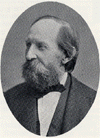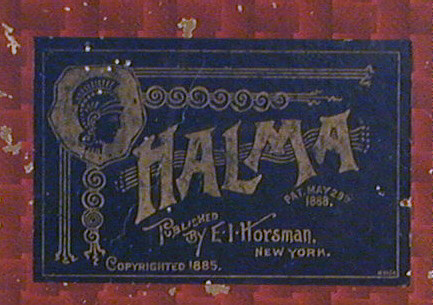|
-
The history of Halma
| Halma was invented by an American professor
from Boston (Massachusetts), Dr. George Howard Monks
(1853-1933) between 1883 and 1884. Monks was an thoracic surgeon at
Harvard Medical School. George's brother Robert Monks
was in England in 1883 or 1884 and Robert wrote to his brother and
described the British game of Hoppity.
G.W. Monks took a couple of suggestions from Hoppity and developed Halma. Knowledge about Hoppity is scarce and it is not clear how strong the connection is between Hoppity and Halma regarding gameplay and game board design. But Halma is not supposed to infringe on Hoppity's copyright.
|
|
| Dr. Thomas Hill
(1818-1891), a mathematician, teacher and preacher, apparently helped
in the development of the game, and it was he who named the game
"Halma"; which is Greek for "Jump". Hill was President of Harvard College between 1862-1868 and was Robert Monks father-in-law. |
|
Halma was first published in the United States in 1885 by E.I. Horsman Company (which called themselves "The Halma Company"). There was controversy surrounding Halma in the US as Milton Bradley Company also laid claim to the rights. It is unclear wherever there was any legal battles; but later Milton Bradley either lost the battle or backed down. They then produced and marketed a modified version as Eckha (see Variations page) in 1888-1889.
Parker Bros.' claim that George H. Monks sold the patent for Halma to them are unverified.
In England Spears Co. was definitely producing Halma games in July, 1893, the earliest date for which there exists records of individual product.
Halma
is the
only 19th Century internationally-known classic game to have originated
in the United States. It is also the only 19th Century American game
still played in many countries around the world. Halma was last
manufactured in the U.S. by Parker Bros in 1961 and has almost
disappeared and been replaced by it's successor Chinese Checkers.
Halma is a game for 2 or 4 players (some rare, early versions of the game also explains rules for three players) and played on a flat square game board with 256 spaces (16x16). 19 pieces each in a two-player game, 13 pieces each in a four player game. In the rare three player game, each player has 15 pieces. In board games terminology, Halma (and Chinese Checkers) is part of the traversal branch of space games.
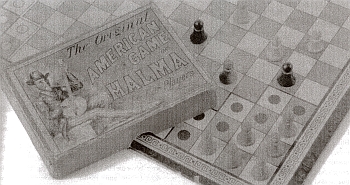 Halma - pg. 51- Whitehill, Bruce: Americanopoly |
Text and
image from: Tradgames.org:"A simple |
 Halma - pg. 125 - Whitehill, Bruce: American Games |
Two things make Halma unique:
1) The number
of pieces used at the start depends upon the number of players
2) Jumped pieces are never captured or removed from the board
![]()
-
The history of Chinese Checkers
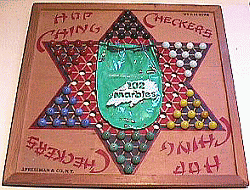 Chinese
Checkers is based on Halma and the only difference is that it is played
on a six-pointed star-shaped game board and then can be played by 2 to
6 players. Each player has only 10 pieces each and the distance to the
opponents home arena is fewer spaces away than in standard
Halma. In some modern versions for children the board is smaller and
the player have only six pieces each. In a two-player game many prefers
to play with 15 pieces each.
Chinese
Checkers is based on Halma and the only difference is that it is played
on a six-pointed star-shaped game board and then can be played by 2 to
6 players. Each player has only 10 pieces each and the distance to the
opponents home arena is fewer spaces away than in standard
Halma. In some modern versions for children the board is smaller and
the player have only six pieces each. In a two-player game many prefers
to play with 15 pieces each.
The first game of Chinese Checkers was published and patented by the German game company Ravensburger (Otto Robert Maier) under the name Stern-Halma (stern means star in English; Star-Halma) in 1892. Spears & Sons introduced the star board to England in 1909.
The first Chinese Checkers game to be published in the United States was 'Hop Ching Checkers' in 1928 by J. Pressman & Co. This was exact the same game as the 1892 Star-Halma. The brothers Bill and Jack Pressman made up the name 'Chinese Checkers' during or shortly after 1928. The game was given a Chinese name and theme in keeping with the current interest in all things oriental (among them the discovery of King Tut's tomb in 1922 and the 'mah jongg' game that was introduced in 1923).
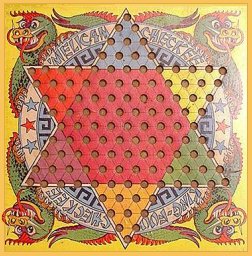
In the 1930s a craze for Chinese Checkers swept across America. Several
other manufactures started to make the game. Many were given other
names; but since no one seemed to own the rights to the name; many were
just called Chinese Checkers. Why this happened is unanswered. The Milton
Bradley Company got a patent on Chinese Checkers thirteen
years later (1941). This is also very odd.
Illustration is of the Straits Mfg. Co. 1938 edition (image from AbstractStrategy.com)
An
interesting question is why Halma is still favored in many European
countries (especially in Germany) while almost disappeared in others
and replaced with Chinese Checkers? Remember also that Chinese Checkers
is called Halma many places (again especially in Germany). Note how
many of the Chinese Checkers computer games on this site who comes from
Germany are always named Halma...
Some
random notes:
According to some sources (unverified) the game is called is
called 'Tiao4 Qi2' or 'Tiau-qi' (Jump Chess, Jumping Chess or 'the
jumping-game') in China. The game board is a six-pointed star like the
Star of David, but it is unrelated to Judaism.
It is not likely that the layout of the board is inspired by the
six-pointed star on the Chinese flag. It has no relationship to either
China or Checkers (Draught). David Parlett's (The Oxford history of
Board games, 1999, pg. 133) claim that Halma '..has
also been known as Hoppity, in hopes of appealing to a classically
uneducated market' are wrong according to the research of Bruce
Whitehill.
Printed sources:
Parlett, David: The Oxford history of Board games, Oxford University Press, 1999. ISBN: 0-19-212998-8
Whitehill, Bruce: American Games: a historical perspective. In: Board Game Studies 2, 1999, p.125
Whitehill, Bruce: Halma & Chinese Checkers: Origins and Variations, pg. 37-47. In: Step by Step: proceedings of the 4th Colloquium, Board Games in Academia, Editions Universitaires Fribourg Suisse, 2002. ISBN: 2-8271-0934-4
Whitehill, Bruce: Americanopoly. America as seen through its games, ed. by the Swiss Museum of Games, 2004, pp.50-51
Online sources:
-
Board Games in Academia IV, 2001
-
The Big Game Hunter - Collectibles to play
-
Wikipedia - entry Halma, entry Chinese Checkers
-
Luding - The board game Database
- Chinese Checkers Strategy (WikiBooks)
-
For some images of old Chinese checkers sets, visit David Toccafondi
For a list of game names, see AbstractGames.com. But they are missing one; Star Checkers (see the link above to Kansas State Historical museum)
![]()
|
© 2004 -2011 Vegard Krog Petersen |
Home
History
Rules
Variations
Online
Freeware
Trialware
About
Links
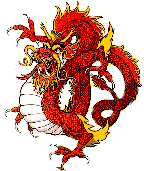
 Chinese Checkers
Chinese Checkers
